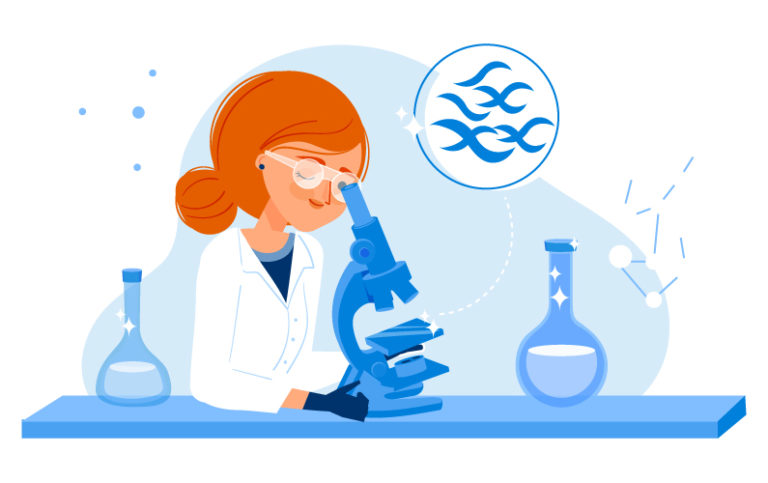The first sustainable cleaning products appeared on the professional hygiene market in the early 1990s and the increase in demand for these products has led to innovation and several new technologies. Biotechnology is one of the most important, as Steve Teasdale, vice-president of scientific affairs at Innuscience explains.
The first sustainable cleaning products appeared on the professional hygiene market in the early 1990s. At the time, these technologies generally did not perform especially well and were not unanimously accepted by a generally insensitive marketplace. Since then, and with more receptive audience the demand for these products continues to grow and to the point where their use is increasingly mandated in many places.
This increase in demand for such products has in turn led to innovation and the development of several new technologies. As you would expect, some quickly disappeared while others remained on the market and continued to evolve. Biotechnology is one of the most important of these, and as market conditions evolve, it continues gaining increasingly important market awareness and share.
The list of chemical ingredients historically used in cleaning products and which are now considered undesirable, of concern or are even banned continues to grow. Given their contribution to cleaning efficacy, their removal must be compensated using new substances and/or technologies. This situation has helped to promote and encourage the technological development for alternative solutions arising from biotechnology; among other things.
It is in this context that significant efforts have been invested in to bring us to a point where it is now possible to obtain as good, or even better levels of cleaning performance using biotechnological cleaning products.
Green cleaning products which mainly used ingredients derived from biotechnological processes – bacterial cultures, enzyme extracts and other bio-ingredients – appeared in the late 1990s. Since then, they have become increasingly popular; with increased recognition and steady commercial growth.
Specific knowledge
The ability to develop biotech cleaning products is not universally available and requires specific technological knowledge and skills that are relatively young and unusual in the professional hygiene market. While our industry has been dominated by chemistry for decades, the arrival of biotechnology has required a significant commitment in terms of energy and resources whether it be in terms of research tools, research, performance analysis, stability assessment or at the level of standards and regulatory compliance.
The manufacture of biotech cleaning products also requires unique expertise. Manufacturing cleaning products with bio-active and/or surface active molecules requires the development of special processes, procedures and quality standards. There have been many developments in this field and the standards and processes implemented are now recognised by the scientific community (Teasdale et al., Food and Chemical Toxicology https://www.sciencedirect.com/science/article/pii/ S0278691517306270)
The evolution of biotechnologies for professional cleaning is booming. We are seeing more and more products using bio-surfactants. These are surface active molecules which are produced by microorganisms and which have unique and remarkable environmental and performance properties.
Other technologies stemming from biotechnologies are under development and already starting to be introduced on the market. This is the case with new disinfection technologies that use viruses that kill targeted microbial pathogen (bacteriophages) in a very specific way instead of disrupting the entire existing microbial flora.
The use of biotechnological cleaning products has brought cleaning to a new dimension. While traditional chemical cleaners have the ability to solubilise and/or emulsify dirt, biotech cleaning products also have the ability to ‘break’ and remove dirt through hydrolysis and biodegradation. This action has the additional benefit of residual activity beyond the short period of mechanical action applied during cleaning or post-cleaning action.
This new dimension of cleaning goes towards a significant revision of the traditional foundations of the famous Sinner Circle – cleaning action continues for hours beyond the application of mechanical action.
Thanks to the characteristics of their make-up and their function, biotech ingredients make it possible to develop cleaning products that are highly concentrated and contain very low concentrations of chemical ingredients (mainly surfactants) once diluted before use. It also makes it possible to achieve very high cleaning and detergency performance without having to resort to using high pH, sequestering agents, builders, solvents and other substances which contribute to increasing the pollutant load and which is the reason why traditional chemical cleaning products are harmful for the environment and cleaning staff’s health.
First patent
For example, in the year 2000 the first biotechnological neutral pH degreaser for kitchen floors was patented and then marketed. This diluted degreasing solution contained less than 0.05 per cent active ingredient and degreased a kitchen floor more efficiently than a traditional alkaline degreaser containing 25 times the amount of active ingredients.
Reduction – using less – is the first and most effective eco-friendly cleaning approach. This product’s high concentration rate makes it possible, among other things, to reduce the transport and use of plastic. Its high efficiency allows for very high dilution rates – reducing the amount of cleaning ingredients used.
In addition, the use of this biotech degreaser directly impacted on reducing cleaning staff’s risk of having an accident. It did not lead to any increase in slipperiness on kitchen floors as can happen with alkaline chemical degreasers. Thus, this reduced the risk of slip and fall in the kitchen whilst its ensured there was no risk of skin or eye burns due to its non-corrosive classification.
Broader concept
The concept of a green cleaning product refers to cleaning products that have a lower and less harmful environmental impact than that of traditional cleaning products. Although this dimension is noble and desirable, the concept for an eco-responsible cleaning product uses a much broader concept that integrates environmental, societal and economic parameters.
In order for a cleaning product to contribute in a sustainable way to the development of our industry, it must integrate these three main axes that define the concept of sustainable development. Thus, beyond the environmental impact cleaning staff’s health and wellbeing as well as the cost of use must be considered when developing new cleaning technologies.
In the previous example concerning the biotech degreasing product for kitchen floors it is clear that this product’s use has a direct impact on aspects which are both environmental and societal. But what about the cost of use? A cleaning product that benefits the environment and workers’ health cannot offer a sustainable solution if it costs more to use. However, the use of biotechnologies makes it possible to develop cleaning products that advantageously integrate the economic aspect.
Since bacterial cultures and enzymatic extracts are highly effective even at very low concentrations and considering their residual and prolonged cleansing action, biotechnological cleaning products can be diluted at very high rates while providing outstanding cleaning performance. These high dilution rates lead to high-performance cleaning solutions that have a very low cost per litre in their applicative usage.
Additionally, biotech cleaning products have the ability to reduce odours due to their mode of action and their ability to extract a greater amount of dirt from surfaces; especially those which are porous and difficult to clean. In public toilets, some odours may be generated following the passage of a user.
However, in reality the most disturbing odours are those which are permanently present and that emanate from surfaces which have accumulated water and more particularly urine. The floors near bowls and urinals are particularly prone to generating these unpleasant odours.
Solving the problem
In view of their inability to solve these problems, a number of stakeholders resort to using methods that are more or less effective and that never really solve the problem. It is common to widely distribute air fresheners to mask these odours. As a last resort, we sometimes see cleaning staff use a rotary floor scrubber and a floor stripper in an attempt to unclog the problematic surfaces with no success.
Ultimately, we have all already visited bathrooms where, in desperation, the floor had been sealed with a floor finish in order to trap smelly dirt. These solutions, which are not really solutions, are all bad for the environment, the cleaning staff and the buildings’ tenants.
The use of air fresheners is particularly harmful and far from being a sustainable solution. These products are essentially volatile organic compounds (VOCs) and they contribute to deteriorating indoor air quality. They also cause multiple inconveniences, discomfort and symptoms which are grouped together and recognised as the Sick Building Syndrome. In addition, these air fresheners attract bad publicity and are considered by more and more people as a pollutant and an invasive nuisance. They are frequently the subject of complaints when used unreasonably.
Now, with the help of a biotechnological all-surface toilet cleaner, it is possible to clean all surfaces, including the floors. This makes it possible to dislodge the dirt accumulated over the years, which are the main sources of bad smells. After a few days of use, bad smells gradually disappear. This approach makes it possible to better clean the floors, but above all to eliminate those air fresheners.
Conclusion
As mentioned by a famous scientist who has left a mark in our history, “We cannot solve a problem by using the same approach that we had used to create it”. Thus, we had and still have a desperate need for new technologies that will provide real and sustainable solutions to the environmental and societal problems associated with professional cleaning and that we are still faced with today. Biotechnology is a good example of a technological and innovative contribution in this field.
Source: European Journal of Cleaning
















